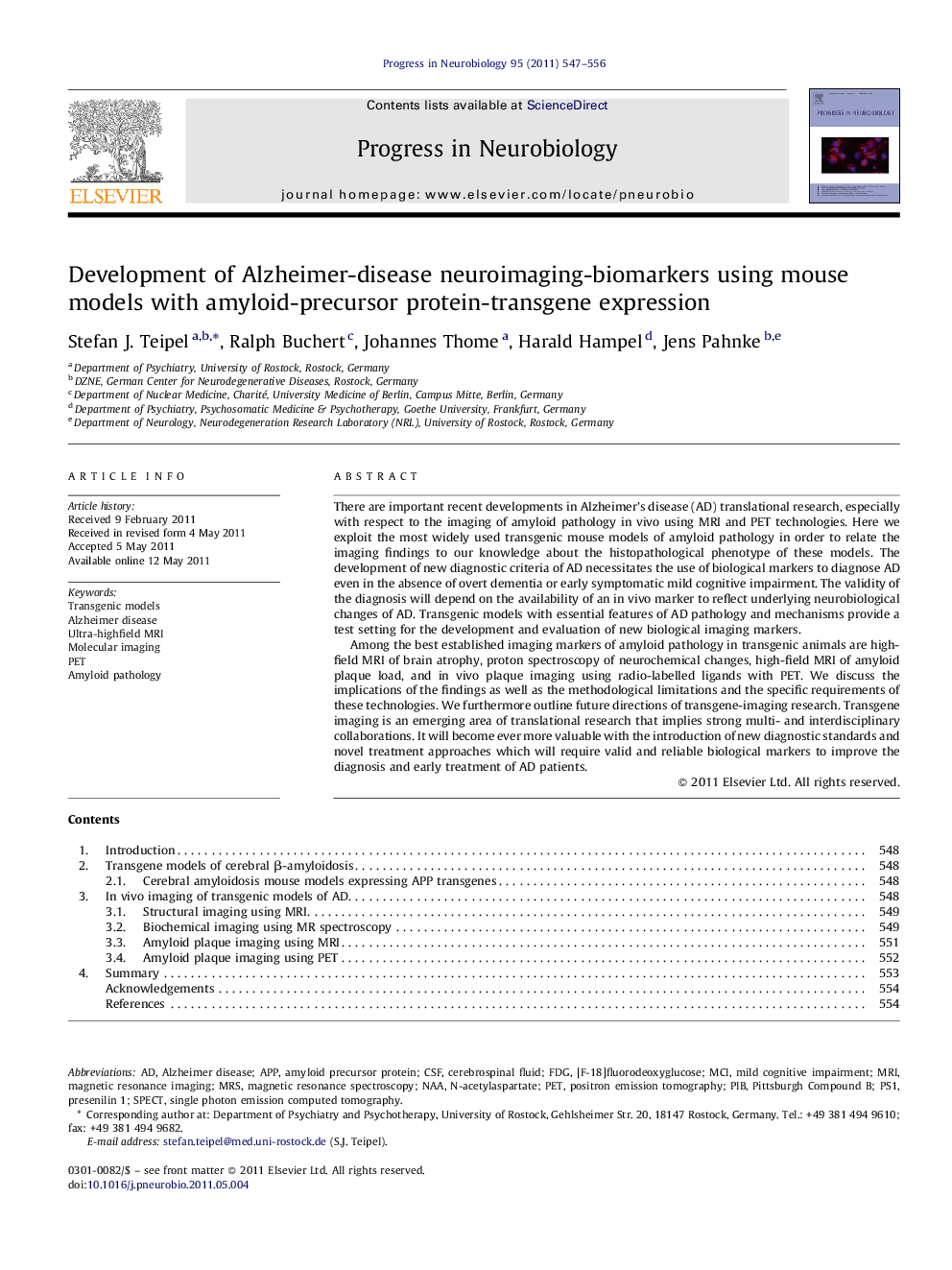| Article ID | Journal | Published Year | Pages | File Type |
|---|---|---|---|---|
| 4353500 | Progress in Neurobiology | 2011 | 10 Pages |
There are important recent developments in Alzheimer's disease (AD) translational research, especially with respect to the imaging of amyloid pathology in vivo using MRI and PET technologies. Here we exploit the most widely used transgenic mouse models of amyloid pathology in order to relate the imaging findings to our knowledge about the histopathological phenotype of these models. The development of new diagnostic criteria of AD necessitates the use of biological markers to diagnose AD even in the absence of overt dementia or early symptomatic mild cognitive impairment. The validity of the diagnosis will depend on the availability of an in vivo marker to reflect underlying neurobiological changes of AD. Transgenic models with essential features of AD pathology and mechanisms provide a test setting for the development and evaluation of new biological imaging markers.Among the best established imaging markers of amyloid pathology in transgenic animals are high-field MRI of brain atrophy, proton spectroscopy of neurochemical changes, high-field MRI of amyloid plaque load, and in vivo plaque imaging using radio-labelled ligands with PET. We discuss the implications of the findings as well as the methodological limitations and the specific requirements of these technologies. We furthermore outline future directions of transgene-imaging research. Transgene imaging is an emerging area of translational research that implies strong multi- and interdisciplinary collaborations. It will become ever more valuable with the introduction of new diagnostic standards and novel treatment approaches which will require valid and reliable biological markers to improve the diagnosis and early treatment of AD patients.
► Ultrahighfield MRI of transgenic models allows detection of amyloid pathology in vivo. ► Neurochemical profiles of amyloid pathology show discrepancies between human disease and animal models. ► PET and SPECT with radiolabelled compounds are the most promising translational markers of amyloid pathology in animal and human studies. ► Imaging features of transgenic models of amyloid pathology reveal the underlying substrate of signal changes in imaging studies in humans.
